
Home |
P.G.SIX – LIVE AT VPRO AMSTERDAM
(Perhaps Transparent)
This limited edition disc kicks off Perhaps Transparent’s CDr series, each release limited to 100 copies and housed in 100% recycled packaging with custom artwork using natural walnut inked handmade stamps created by artist Kim Jones. So, it looks as great as it sounds! The disc presents a rare complete live performance from Pat Gubler, accompanied by percussionist Tim Barnes on November 13, 2004 at the first annual Dwars Festival in Amsterdam at the Desmet Studio of Dutch national radio station VPRO. (Terrascope favourites Glenn Jones and the late Jack Rose also performed at the event.) Opening, appropriately, with ‘Come In,’ Barnes’ percussive intro sounds like a kettle drum before Gubler’s relaxed acoustic strumming meets up with Barnes’ switch to tabla effects as the song forms a perfectly medley with the traditional Irish tune, ‘Winter it is Passed.’
Another medley follows that weaves ‘Young Man’ and ‘Lake of Beer’ around Townes Van Zandt’s sonically similar ‘High, Low, and In Between.’ You’d never know you were listening to three different songs if Gubler hadn’t announced his intentions beforehand! Barnes’ sedated tapping propels the track(s) forward, but there is plenty of breathing room for Gubler’s intricate, spellbinding guitar lines.
The intimate studio setting sounds like the pair are playing the front room in front of a couple of friends, so the mood is relaxed throughout, not too dissimilar from Pat’s laidback performance at Terrastock VI in Providence in 2006. A couple of tracks from his 2001 debut Parlor Tricks and Porch Favorites, including a confident interpretation of Anne Brigg’s ‘Go Your Way’ and another medley, ‘Old Man on the Mountain’/’Evening Comes’ (this one featuring Barnes on a ukelin, a stringed instrument similar to a zither that adds a haunting, almost Oriental, VU-styled air to the tunes similar to John Cale’s dark, cello embellishments) round out the set. A wonderful opening salvo for the series, we’re anxious to hear more. (Jeff Penczak) |
|
| |
|
|
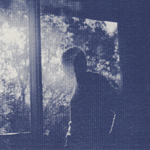
Home |
VARIOUS ARTISTS - IN SEA REMIXES
(Silber)
First off, let me confess that remix albums typically bore and irritate me – like listening to the 20 minute 12” dance mix of some 2:00 pop dittie. They usually rob all the life out of the original, turning it into scrambled, unrecogniseable mush. But Aarktica’s Jon DeRosa was involved firsthand with this project, and admits his originals (which we reviewed here) were perfectly suited to the remix concept, so much so that the artists actually reworked his songs, rather than simply rearranging a few notes here and there.
It also helps that many of the remixers work in the same genre/style as De Rosa (which I’ve labeled “snorecore”, though I know Phil in particular is a big fan and considers that a little disparaging!), e.g., Ramses III, Yellow6, and Terrascope/stock faves, Landing, Hood (courtesy Richard’s Declining Winter project) and Mason Jones (late of SubArachnoid Space), that the new versions are interesting tweaks rather than bastardised, “well, I think you should have mixed it this way” pronouncements.
Such is the case with Ramses III’s ‘Sky Burial Remix’ of original album opener, ‘I Am (The Ice).’ Both float along like ice bergs in the mid-Atlantic searching for unsuspecting cruise ships. Summer Cats take one of De Rosa’s two vocal tracks (‘Hollow Earth Theory’) and add several layers of echoes, crashing waves, and flocks of seagulls to put the listener in a lifeboat in the middle of the ocean – an entirely new experience that adds an aura of tension to the original ballad. Al Qaeda add waves of industrial machinery to ‘A Plague of Frost (In The Guise of Diamonds),’ sadly burying one of the album’s most peaceful and meditative tracks under a maelstrom of pseudo-explosions and mushroom clouds of shredded guitars – sort of what I was afraid of when I first heard the word “remix.” And Mason Jones adds a drum track to the title track that I’m not sure I agree with, although the dichotomy is interesting – like catching some Z’s in a hammock on a summer day while your next door neighbour is building a treehouse in his backyard. Keith Canisius does the same with ‘Autumnal,” condensing the guitar lines to sound not unlike Robert Smith’s gothic arpeggios with The Cure. He even adds lyrics, thus extending the track an additional two minutes and, like Yellow6 (below) creates an entirely new song. And I can certainly do without James Duncan’s disco remix of ‘When We Were Ghosts.’
Elsewhere, Yellow6 mutes the gorgeously cascading guitar arpeggios from ‘Onward!’ and intensifies the echoed effect like a newbie who just discovered a wah-wah pedal. He also doubles the track’s original length, adding more drum fx, glitches and piano strolling to create an entirely different song. This one might have been more effective on a tribute album rather than a remix, wherein I see the artist’s role as one of refiner, modifyer – stretching the original into new territories, but essentially using the same backing track instead of creating something in his own image. It should still sound like an Aarktica track, not a Yellow6 track. The project concludes with three rearrangements of Danzig’s ‘Am I Demon?’ Richard Hood (aka Declining Winter) adds violin and an even more haunting vocal track, Pan goes for the bleeps and bloops electronic approach, and our friends in Landing match DeRosa’s stark, aimless, almost hypnotic interpretation with one of the album’s finest arrangements.
An interesting pseudo-collaboration that will be of interest to DeRosa’s fans to see how his music can be transformed in the hands of some of the current crop of “old men playing in the same circles as Aarktica.” Most of the laidback, almost melancholic vibe of the original is lost, so fans of DeRosa’s return to Aarktica’s more glacial arrangements may have to listen with a grain of salt, but newbies are certainly encouraged to pick up the original and A/B the tracks as we did. It’s an ear-opening experience and an education in musical interpretation and extrapolation. (Jeff Penczak) |
|
| |
|
|
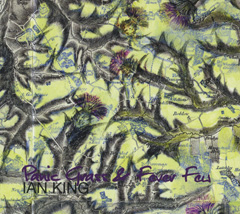
Home |
IAN KING –PANIC GRASS & FEVER FEW
(CD from Fledg’ling Records)
Modern British folk singer Ian King offers anything but (modern British folk) on his confident debut. With friends like the legendary Ian Anderson and Shirley Collins cheering him on, the self-proclaimed (and rather accurate!) “King of England” offers energetic, 21st century takes on ancient British folk songs ranging from the 15th – 19th centuries. The Crispy Horns help breathe new life into such olde tyme favourites like the galloping cha cha arrangement of ‘Death & The Lady,’ and King’s meticulous guitar fills wrap everything up in tightly constructed little packages. Banjo embellishments on the 18th century ballad, ‘Black Eyed Susan’ and ‘Evil Eye’ (which borrows lyrics from a 17th century poem) bridge the past & present, particularly producer Adrian Sherwood’s echoed vocal effects on the latter.
Kings’ arrangement of the popular English gypsy song ‘Flash Company’ adds a sprightly violin solo from Felipe Tavares and soulful cooing from a trio of backing vocalists (including hip hopster Ghetto Priest), and Sherwood’s daughter Denise combines with King for a tender duet on William Cornysh’s 15th century poem, ‘Ah Robin, Gentle Robin.’ Sherwood’s production is sedate throughout – not to worry about this turning into some godawful reggae-folk hybrid, although his dance sensibilities do liven up the proceedings, particularly on the groovy, calypso beat of ‘Isle of France’ (from the version published in 1912 when the Titanic sank and King’s beloved Barnsley won the FA Cup!), but rest assured that this is no stodgy, dusty, reverential worshipping of Britain’s true folky ballads. There’s a party happening here and King is having as much fun as possible with these long forgotten tunes.
A welcome new talent who is highly recommended to fans of Lazy Farmer, Roy Harper, Richard Thompson, and Pat Orchard. (Jeff Penczak) |
|
| |
|
|
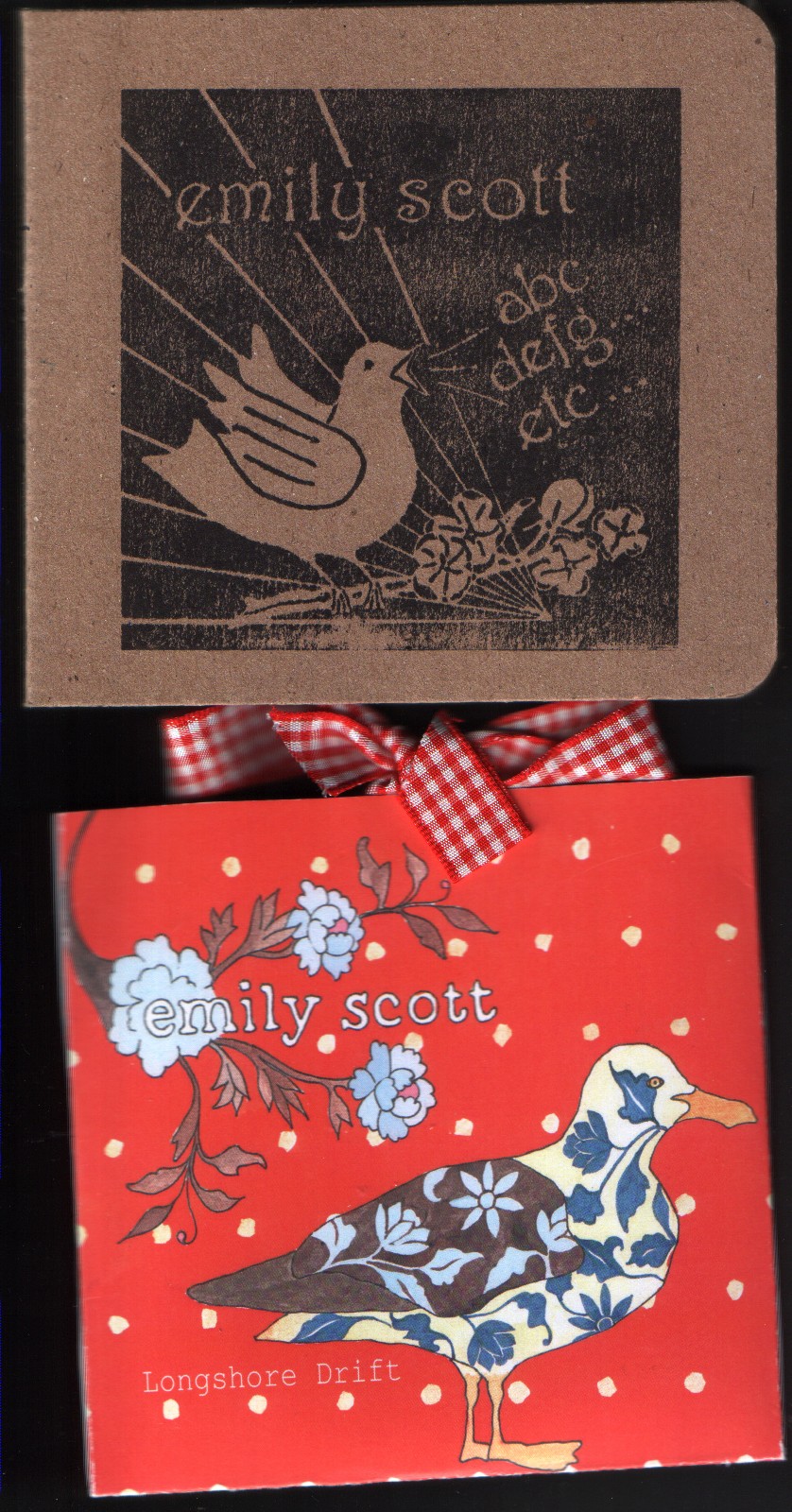
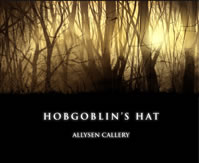
Home |
EMILY SCOTT – LONGSHORE DRIFT
EMILY SCOTT –ABCDEFG etc.
(CDs from emilyscottsworld@yahoo.co.uk)
ALLYSEN CALLERY – HOBGOBLIN’S HAT
(CD from allysencallery@yahoo.com)
I first heard the music of Emily Scott as part of the “Seasonal Sevens” vinyl series from Autumn Ferment Records, the beautiful “Pond Dipping” captivating me with one listen. It was a pleasure, therefore, to receive an e-mail from Emily offering to send me copies of her two albums, an offer I willingly agreed to.
Opening with a lazy haze of notes, “Watching Them” is a soft-focus start to the “Longshore Drift” album, Emily’s beautiful voice singing of love and starlings, a wistful tune that slows down the world. Backed by fluttering chimes, the title track holds the mood, a gentle summer musical breeze that is refreshing and perfumed with sunlight, the soft guitar beautifully played.
Adding some banjo, Malcolm Le Maistre may be a name familiar to you, His sympathetic playing adding to the charm of the “Humming Song”, whilst “I Lean” is a song of friendship with playful lyrics and an upbeat heart. Slow and sombre “Sea Shanty” seems to be a very personal song, filled with longing, the Cello, adding notes that seem like waves breaking on a far shore. With the addition of Banjo from Malcolm Le Maistre and Ukelele from Pete Baynes, “Pond Dipping” remains a favourite, a nostalgic visit to childhood and endless summer holidays, the soft music adding a rose coloured sheen to the song. Released in 2007, this is a fine album that has a unified feel, the music sparkling with a sunny disposition.
Recorded and released in 2009, “abcdefg…” is an equally captivating set from Emily Scott, the addition of a wider palette of sound adding depth to the songs, with the haunting, drifting piano on “Downriver” being particularly effective, weaving beautifully with the voice. On “All That Glitters”, there is a hint of Joni Mitchell to be found, especially in the delivery of the words, whilst on “Eyelet” a rolling bass line and piano refrain add a smoky groove to the song, one of my favourites on the album.
More great piano sounds can be found on “Don’t You Tease Me”, another fine song, the piano adding a jazzy feel to both this song and the album as a whole, something that works really well for the songs. After the lazy day waltz of “Pageant Queen”, a gospel feel is to be found on “Lazy Falls”, a gorgeous song with an excellent vocal performance, the charming “Duck out of Water” completing a faultless trio of songs with a smile on its face. To close things, the piano takes centre stage again, as the beautiful “Solitaire” washes you cares away, a song to lie back and close your eyes to.
Allysen Callery’s last album “Hopey” owed an obvious debt to Joni Mitchell, whilst displaying talent and skill a-plenty. On her latest offering “Hobgoblins Hat”, her songs are stronger and more personal, as she has developed a style of her own, meaning Joni is now just a whisper in the background.
Flickering into life, “Tiny Armageddon” is a gentle glide of notes, the vocals skating above them beautifully. This relaxed wistful feel is also to be found on “Jack Jumps Back”, the two songs blending together, inviting you into the music. Seemingly based on a story in The Moomins, at least I think so, the title track is a magnificent affair, the lyrics and arrangement painting pictures in your mind, allowing you to drift away with the gentle guitar refrain. On “Vincenzo Part 2”, Allysen sound uncannily like Kristin Hersh, both in style and delivery, although on “Vincenzo part 1” the comparison is not as valid. Bookended by these tracks “Button Boots” is an exquisite piece of music that is beautifully arranged to bring out every delicate nuance of the song.
With a mellow and almost fairy tale charm to the album it is probably best enjoyed in the evening, after work is done, and with a glass of wine in hand, just allow the music of “Mr Moonlight” to soothe you. All to soon “Ring Around the Moon” bathes the room in sound, the last song on a fantastic disc that is truly enchanting. (Simon Lewis)
|
|
| |
|
|
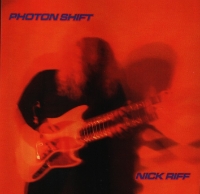
Home |
NICK RIFF – PHOTON SHIFT
(CD from www.nickriff.com)
Having been playing in bands since the mid 70’s, and an avid Terrascope reader and follower since it's inception, Nick Riff is no stranger to the Terrascopic musical landscape. His brand of Space-Rock Psychedelia is always pleasing to the ear, with his “Freak Element” album remaining one of my favourites released on the Delerium label.
Opening with style, “Edge of Time” is a slow-burning rocker, the riff punching out of the speaker and landing in your cranium. With the kind of feel that Bevis or Outskirts of Oblivion used to kick up, this is bound to be a classic, especially live. With echoed synths a-plenty, “Glowing Bowl” (ho hum) sounds like it could be a mellow ambient affair, that is until another heavy guitar riff bursts, without knocking, into the room heralding another great slice of heavy space, nice and noisy, as my mother used to say, although to be fair, there is also a mellower middle section, followed by a fine guitar workout that grabs your attention.
While in no danger of becoming Metal, “Symbiont” has one of those chugging riffs beloved of Hawkwind in the late 70’s/early80’s, the distortion assuring it remains more garage than not, the flowing guitar solo twisting minds in just the right style, a song that needs some serious volume, especially when it breaks down into a cosmic drone, a huge roar from the centre of the universe that detonates your soul, as it should.
Playing every instrument himself has given Nick total control, something he uses to great effect, the whole album flowing beautifully, each song the perfect one, sequenced to be played as a whole, the slow psychedelic drift of the title track, placed at the centre of the album to dazzle and beguile the listener. Here, Nick pulls out all the stops, creating a mini masterpiece, a timeless piece of psychedelia that deserves to be heard free from distraction.
With a sweet acoustic guitar, “Already Gone” has a psych-pop heart, the sweetness of the song tempered by the ecological tale contained within, the tune getting heavier towards the end over a backing of looped animal noises. Filled with shimmering guitar, “Mindflow” does just what it says on the tin, nine and a half minutes of cosmic bliss with a rock beat and a swirling heart, just lie on the floor and melt along and then stay there as the soft-landing float down of the drifting “Halls of Amenti” fills the room with incense, sounding not unlike the more psychedelic moments on “Electric Music for Mind and Body”, and that is high praise indeed.
Beautifully played and without a duff track, this album gets better each time, go find one especially if it comes with the limited addition bonus EP, which contains five wonderfully relaxed and ambient tracks, played on guitar and synths and containing a peace filled soul. (Simon Lewis)
|
|
| |
|
|
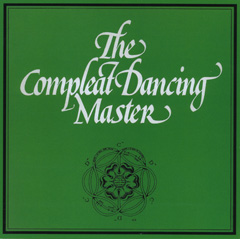
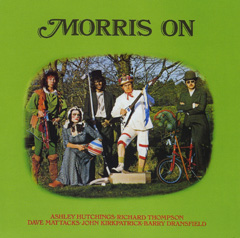
|
ASHLEY HUTCHINGS / RICHARD THOMPSON / DAVE MATTACKS / JOHN KIRKPATRICK / BARRY DRANSFIELD - MORRIS ON & THE COMPLEAT DANCING MASTER
(Fledg’ling)
Morris dancing dates back over 500 years, but Ashley Hutchings was smitten when he first heard it performed on a scratchy record by Headington Quarry concertina player, William Kimber. He contacted the finest Morris musician of his generation, accordion, concertina, and harmonium player John Kirkpatrick with an idea towards electrfying Morris and roped violinist Barry Dransfield (whom you’ll all remember performed ‘Stonedance’ on Bevis Frond’s London Stone) and his former Fairport Convention mates Richard Thompson and Dave Mattacks into joining him.The result is one of the most eclectic, yet thoroughly enjoyable releases of his long career, originally unleashed in 1972 and now lovingly reissued in a gatefold digipak with Hutchings’ liner notes recounting its origin.
Since there’s no video accompanying the disk (or tagged on as a bonus track), you’ll have to make do with the mental images of the morris side (i.e., the Chingford Morris Men team of dancers) that perfomred the stick dances in the studio during the recording of several tracks. And from all the laughter and studio banter, it’s obvious all concerned had the times of their life, or as Hutchings admits in his liners, “We had a ball.”
Summoned to the party byBarry Dransfield’s violin solo on the opening ‘Morris Call’, we’re off through a rousing a capella rendition of ‘The Nutting Girls’ (before Kirkpatrick’s accordion awakens our happy feet), Even special guest Shirley Collins gets in on the fun with her angelic soprano lifting ‘Staines Morris’ and ‘Willow Tree’ heavenward. Of course, half the fun of Morris dancing is the actual dancing itself, so a soundtrack without visuals may be completely lost on listeners unfamiliar with the choreographed moves, usually involving sticks, swords, or handkercheifs, but the music is so infectious, you might just find yourself dancing jolly jigs on your own.
Morris On met with enough enthusiasm to encourage Hutchings and Kirkpatrick to head back into the studio the following year to “cover seven centuries of ‘traditional’ dance music in England using a combination of old instruments and modern electricity.” To make matters even more interesting (or insane), they also decided to link the tracks with “historically suitable spoken word.” So, in addition to the music, we get readings from Dickens, Hardy, and Shakespeare. Again, three Fairporters (with Simon Nicol replacing Thompson) are joined by 30 assorted “experts in their fields” for an unforgettable collection of words and music featuring bagpipes, accordions, hurdy-gurdy, rebec, nakers, crumhorn, oboes, viols, and the Fairport’s bass, guitar and drums. Starting, appropriately with ‘The Beginning of The World,’ we’re up on our feet again with pipes and accordion beckoning us to the dancefloor.
It’s an ambitious project to be sure, but not as successful as the morris collection, partly because the source material is not dated, so we never get our historical bearings. Thus, a 14th century reading from Chaucer is followed by ‘Stantipes,’ a contemporary medieval dance and a short diatribe from William Prynne’s mid-17th century Histriomastix predeeds ‘Cuckold’s All Awry,’ a popular contemporary country dance, but frankly I couldn’t tell the difference that three centuries of musical exploration and invention yielded.
Where the album works best is when the spoken word excerpts are more explicitly related to the following musical illistrations, such as Sarah Badel’s dance speech from Shakespeare’s Much Ado About Nothing preparing us for the traditional Ceili dance tune, ‘Haste To The Wedding,’ Michael Gough’s reading from William Hogarth’s 18th century instruction manual of taste, Analysis of Beauty leading into the popular reel, ‘Mr. Cosgill’s Delight’ and Michael Hordern’s dance instructions from Dickens’ Sketches By Boz preparing us for the sprightly reel ‘Bobby Breastknot,’ a traditional tune the Fairports themselves later recorded on The Wood and The Wire. But then we retreat back to the 16th century for Alec McCowen and Ian Ogilvy’s excerpt from Thoinot Arbeau’s dance manual Orchesographie (1588), which offers participants instructions on how to dance the current classical music dancesteps. The quaint ‘Hare’s Maggot’ by the quartet, The Jaye Consort of Viols is certainly a pleasant enough example of the current dance step – a reel or skip-jig in 3:2 time , but my head feels like it got scrambled in H.G.Wells time machine and I’ve lost all track of time and space. It’s more of a history lesson for those not paying attention and the trajectory of traditional English dance is somewhat blurred. I feel that if you want to explore the early British dance and music scene, you’d be better off picking up the early Gryphon albums instead. (Jeff Penczak)
|
|
| |
|
|
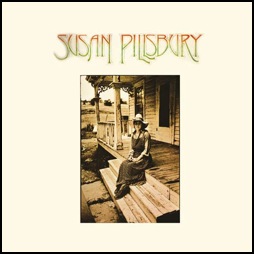 |
SUSAN PILLSBURY - SUSAN PILLSBURY
(Sunbeam)
The lone album from New Yorker Pillsbury was recorded in a week in 1973, released on the small Sweet Fortune label, and promptly sank without a trace. Internet collectors and musicologists like Aaron Milenski soon discovered it and sang its praises, although Pillsbury herself seems somewhat dismissive in the booklet’s interview (conducted by Milenski). It’s sparse arrangements (mostly Pillsbury on guitar, accompanied by music director/guitarist Jay Berliner and upright bassist Richard Davis) run the gamut of olde tyme jazz (a snappy ‘Brown Eyes’), heartfelt spiritual hymns – Pillsbury is currently a senior Methodist minister in North Carolina (‘Never Said Goodbye’, ‘Heaven’), and contemplative folk (‘Highway’, ‘You Found Me’). Although the label was hoping she could match the current popularity of chart toppers Maria Muldaur (‘Midnight At The Oasis’) and Melanie (‘Brand New Key’), Pillsbury confesses that “it became clear pretty fast that I wasn’t going to be an AM artist any time soon.” While the songs admittedly don’t have the hooks to trouble the charts of commercial, pop radio, there’s a relaxed, assured feeling to tracks like ‘It’s Hard To Be Easy’ that grow on you with repeated listens. And the lyrics to the Civil War story song, ‘Joe And Luther’ are both heartbreaking and wise beyond her tender years in combining antiwar and desegregation sentiments.
So while listeners may hear a little Janis Ian, Laura Nyro, or Judee Sill, Pillsbury’s unique presentation of her current catalogue of songs may have been too varied to garner much national airplay or, indeed, that all-important hit record. After the record’s release, Pillsbury took voice lessons and played the East Coast with guitarist, Gene Gambardella. Several of their later songs are included as bonus tracks, and they show “evidence of the three years’ vocal training I had taken right after the album. I also like the simplicity of the recordings.” They’re more straightforward love songs “reflecting the turbulent nature of my love life at the time” and there’s also more of a country feel to tracks like ‘Cowboy In Brooklyn’ and ‘Heaven Only Knows’ that might have garnered favour with fans of Emmylou Harris or Linda Ronstadt if they’d been released at the time (1976). (Jeff Penczak) |
|
| |
|
|
| |
|
|
| |
|
|
| |
|
|
| |
|
|
| |
|
|
| |
|
|
| |
|
|
| |
|
|
| |
|
|
| |
|
|
| |
|
|
| |
|
|
| |
|
|
| |
|
|
| |
|
|
| |
|
|
| |
|
|
| |
|
|
| |
|
|
| |
|
|


